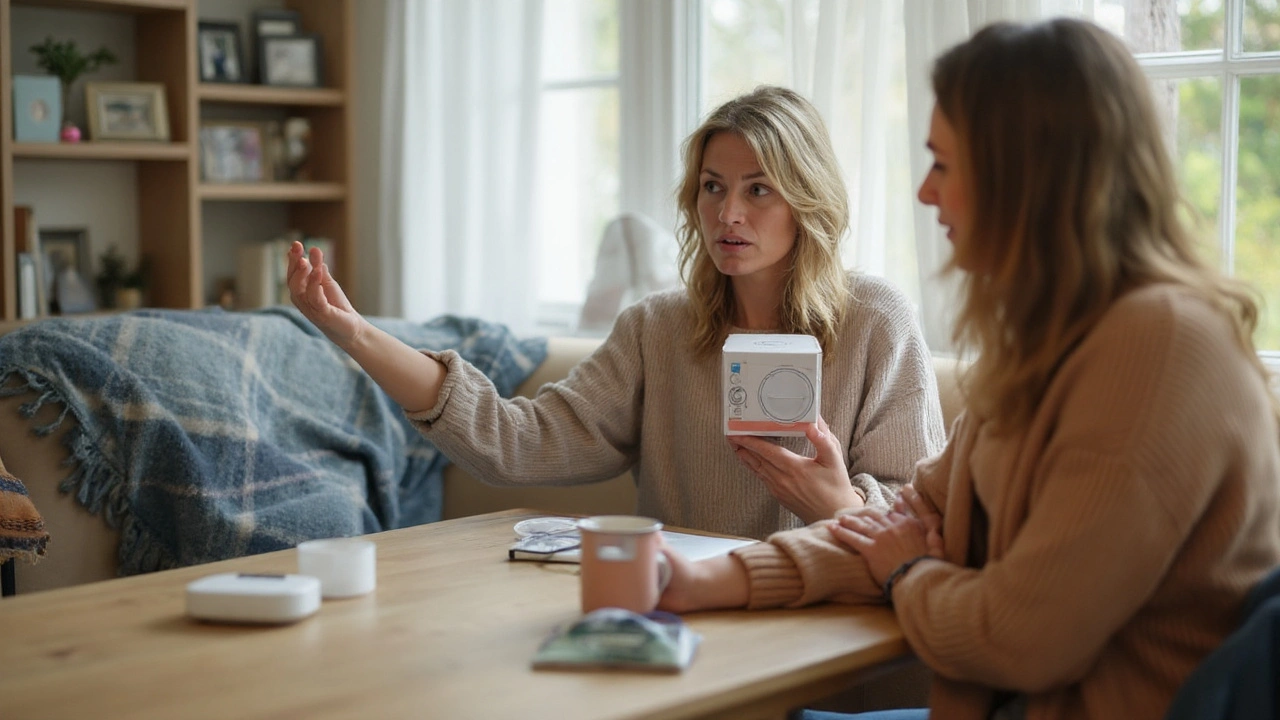Picture this: it’s 3am, your house is quiet, you’re glued to your phone’s screen watching your baby sleeping—except you’re actually watching through a WiFi baby monitor. Sounds convenient, right? That’s what most marketing will tell you. But lurking behind all those fancy features are trade-offs most parents aren’t warned about. And once you look behind the curtain, things get a little uncomfortable. My son Callum was born in an age of smart-everything, but our family decided not to go down the WiFi monitor path. There are some pretty big reasons why.
What Makes WiFi Baby Monitors So Tempting?
Let’s not kid ourselves—WiFi baby monitors are everywhere for a reason. Being able to check on your baby from your phone while you’re in the backyard or miles away brings obvious appeal. They brag about HD video, cloud storage, talk-back features and smart alerts for movement or even room temperature. Some even let multiple family members check in, so Grandma can peek in on her sleeping angel from states away.
For tech-loving parents, these gadgets sound life changing. Set-up is quick if you know your way around a router. You get night vision (because apparently babies come with built-in invisibility after 8pm), white noise features, lullabies, sleep tracking, and even AI-powered insights. What’s not to like?
Maybe you’re imagining yourself finally finishing a hot cup of coffee while baby naps and you watch from your phone in another room. Or maybe you travel for work and you picture yourself checking up on your little one from a hotel room. Marketing absolutely nails those dreams. But they don’t mention what you’re actually signing up for along with the convenience. That’s where things turn less dreamy.
The Real Risks: Security and Privacy Concerns
If you’ve been on parenting forums lately, you’ve probably seen words like “hacking” pop up next to baby monitor debates. It isn’t just people being paranoid. There are real, documented cases where strangers have accessed nursery monitors. In 2019, a family in Texas went viral after a hacker spoke to their baby through a WiFi monitor at night—he even turned the camera and spied around the room. That’s not a one-off, sadly.
Poor password protection, outdated firmware, or weak network security can make WiFi baby monitors an open door for hackers. Even if the video signal is encrypted, company servers might get breached and data leaked. Some monitors store video “in the cloud.” That means someone else—a tech company you may never have heard of before, and all its employees—stores footage from inside your home. And they don’t have the world’s best track record for guarding your family’s privacy.
A 2023 University of Michigan study that tested popular WiFi baby monitors found over 60% had vulnerabilities that could be exploited if someone wanted to snoop, especially if the device was never updated. Even worse, a lot of brands quietly collect motion and audio data for their own AI research or to refine their marketing. They may anonymize it, sure. But what’s “anonymized” to a company still feels a little too personal when it’s footage of your child sleeping.
| Year | Reported WiFi Monitor Security Issues (US) | Percentage with Vulnerabilities |
|---|---|---|
| 2021 | 52 | 58% |
| 2022 | 68 | 61% |
| 2023 | 74 | 64% |
So sure, a WiFi baby monitor is handy when you’re running errands. But it’s also a window into your nursery for anyone clever (or criminal) enough to find their way in. Ask yourself: do you honestly feel comfortable with even a tiny chance of that happening?

Non-WiFi Baby Monitors: Why Simple Can Be Safer
This is where non-WiFi baby monitors come in. These use radio frequencies—a bit like old walkie talkies—or DECT, which is a secure audio transmission technology. You get a paired parent ‘unit’ and a camera or microphone unit in the baby’s room. No app downloads. No logging into anything. No connection to the internet. No company servers snooping on you or quietly tracking your baby’s nap schedule. It may sound old school, but sometimes low-tech is the new smart.
If you’re worried about the range, modern non-WiFi monitors easily cover big homes and thick walls. Some models let you clip the parent unit to your belt so you can keep an ear out while folding laundry or even stepping into the garden. You don’t have to be glued to your phone (which for my sanity, is a huge plus anyway). And here’s another real win—there’s zero risk of a stranger hacking in, because the monitor isn’t on the internet to begin with.
My own experience with Callum was night and day. We used a basic digital audio monitor—no camera even—and it felt safer. Our worries shifted from “what if someone hacks us?” to “is he still asleep or going to wake up the whole street?” You realize really fast just how much you could do without an internet connection. There’s no software to update, no subscription fees for fancier cloud features, and you get battery life that WiFi monitors can only dream about (I've only needed to charge ours twice in a week, sometimes less).
One more thing parents don’t consider: what if your WiFi is spotty, or goes out? With a non-WiFi monitor, you’ll never end up racing upstairs because your app crashed or your video froze. Less tech, less drama.
Choosing the Best Baby Monitor for Your Family
So here’s where the rubber meets the road. No one’s saying you should go full caveman and toss all your tech. But if you’re weighing safety, privacy, and reliability, a non-WiFi baby monitor checks a lot of boxes. If you’re thinking about making the switch or just starting out, here are some questions to chew on:
- Do you need perfect video, or is audio enough to alert you?
- Are you often away from home, or do you just want peace of mind in the next room?
- Is your home’s WiFi fast and secure, or does it drop out if you sneeze?
- How much does privacy matter to you—not in theory, but for real?
- Are you ready to handle regular app or firmware updates?
If you do want a camera, look for digital video monitors using FHSS (Frequency Hopping Spread Spectrum)—these split the signal into tiny bits that jump between frequencies, making it crazy hard for anyone to listen in. Pick something with no app connection, no Bluetooth, and no uploads to the cloud. Also, grab one that has strong battery life and a loud enough alert for deep sleepers like, well, me after a week of midnight diaper changes.
If you already have a WiFi monitor, change the default password! Update the firmware. Turn off remote access when you aren’t using it. Cover the camera if you don’t need video at night. At the end of the day, the "smart" tech isn’t nearly as smart as it thinks it is. Old-school solutions have stood the test of time for a reason.
Bringing it all together, WiFi baby monitor risks stack up pretty fast when you factor in hacking, data privacy, and simple reliability issues. Those cloud-stored memories may look cute at first, but it’s worth asking if convenience really trumps peace of mind. When your home is your sanctuary, keeping your tech as private and low-fuss as possible just feels right.
